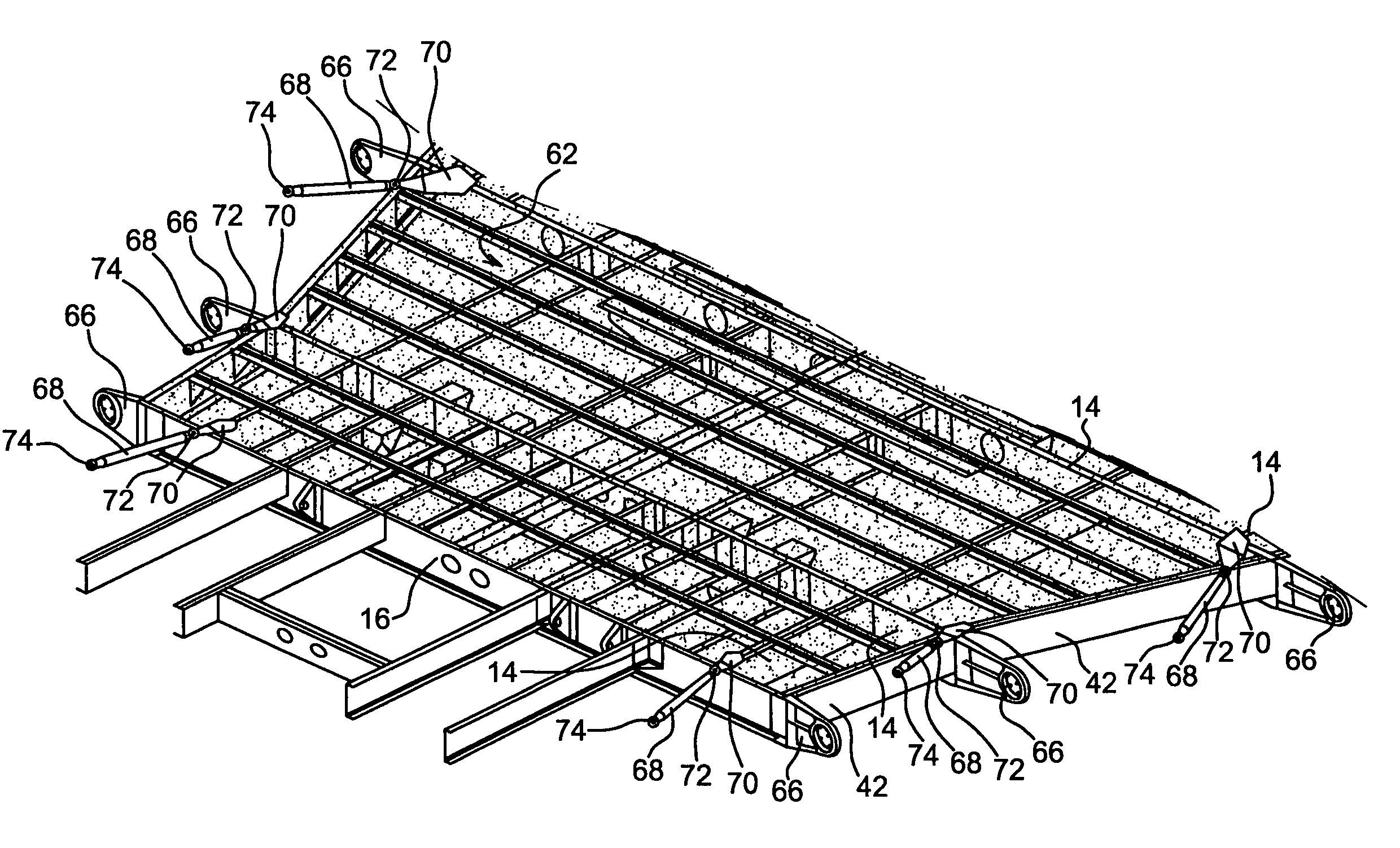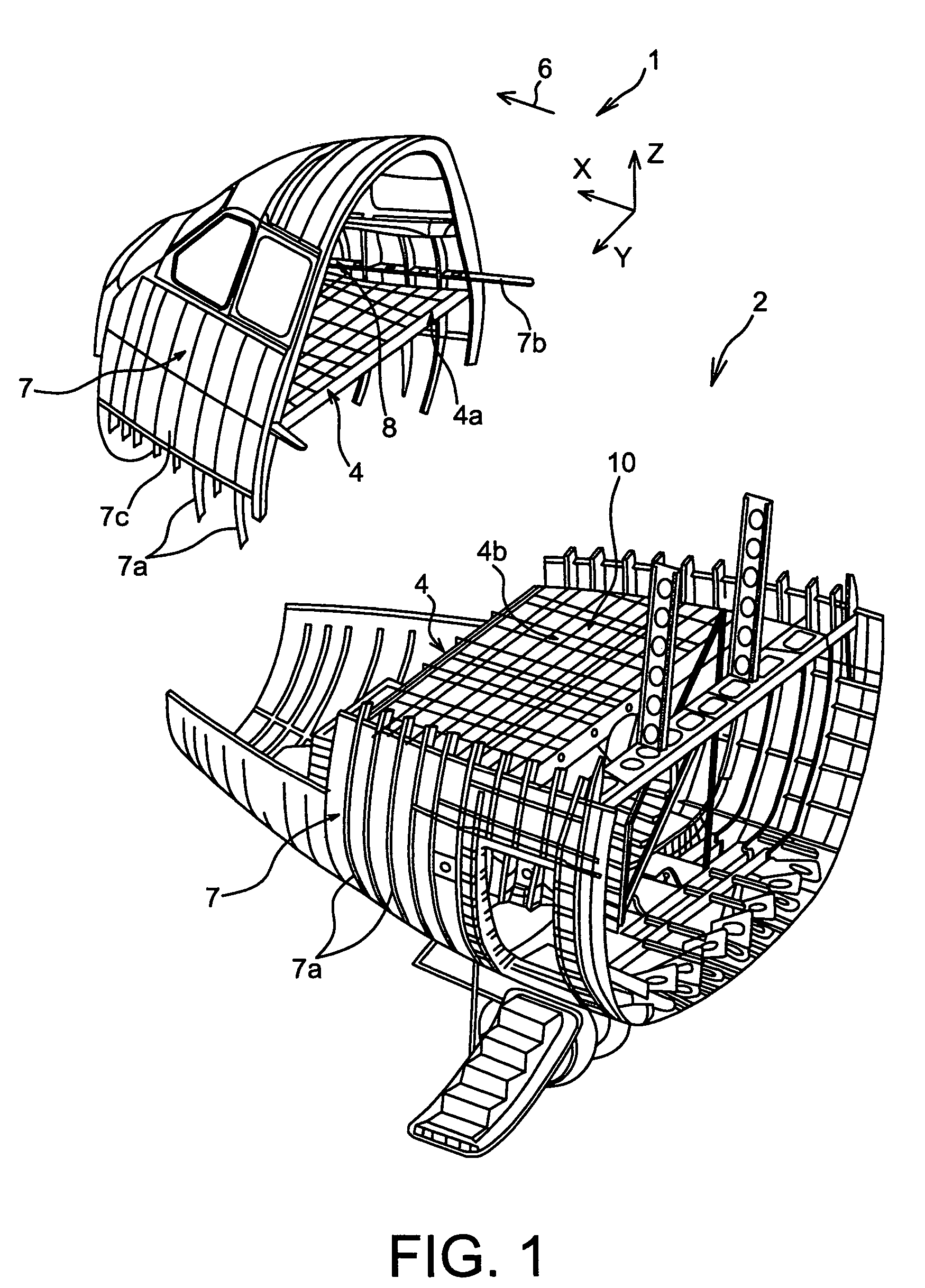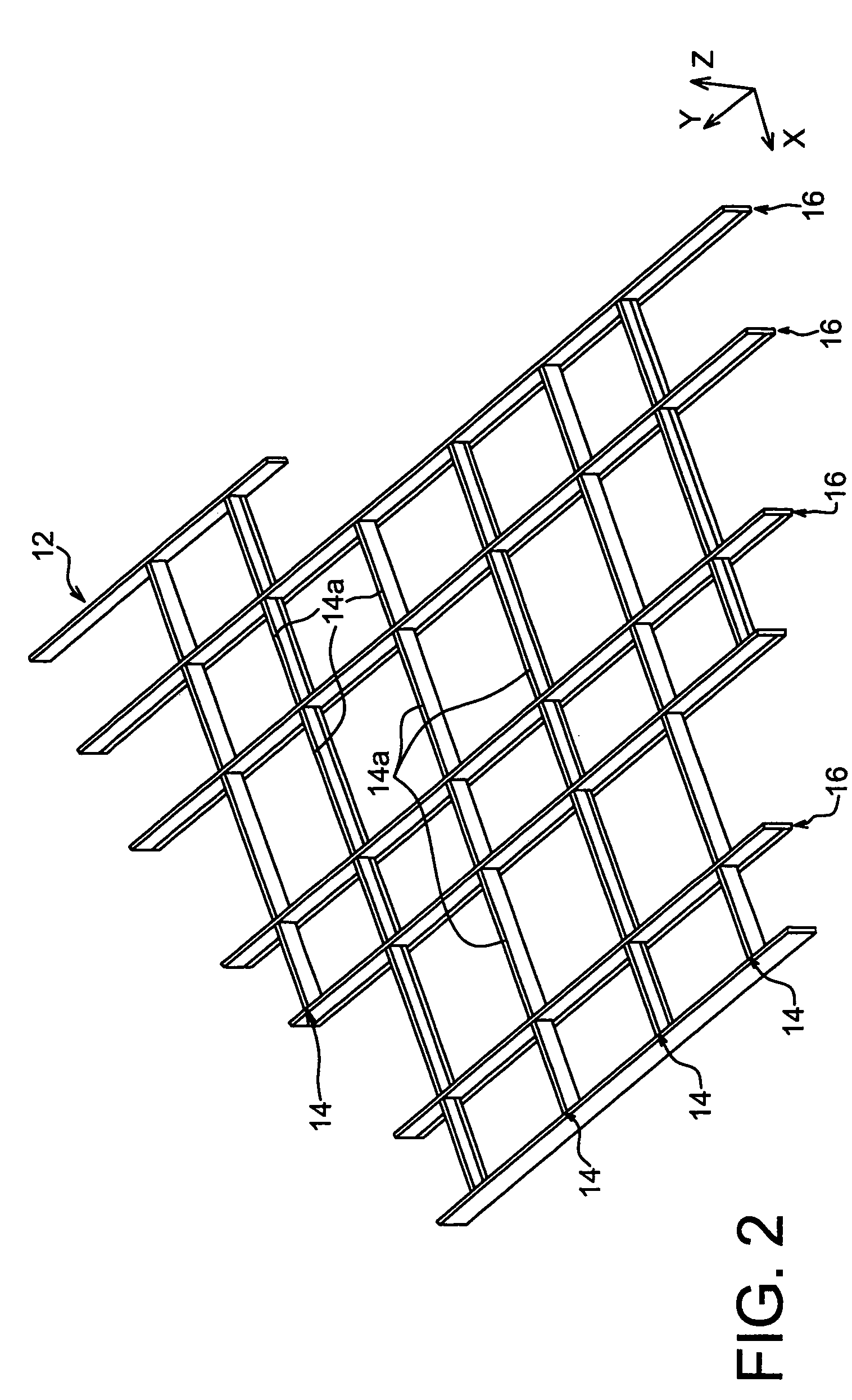Cockpit floor for aircraft
a technology for aircraft cockpits and cockpits, applied in aircrafts, fuselages, transportation and packaging, etc., can solve the problems of difficult practice, large disadvantages, and long time-consuming for fuselage boxes to be assembled, and achieve high mechanical performan
- Summary
- Abstract
- Description
- Claims
- Application Information
AI Technical Summary
Benefits of technology
Problems solved by technology
Method used
Image
Examples
Embodiment Construction
[0040]FIG. 1 shows a partial view of the forward part of an aircraft 1, and more precisely the nose part 2 of this aircraft, comprising a cockpit floor 4 according to a preferred embodiment of this invention.
[0041]Throughout the description given below, by convention X denotes the longitudinal direction of the aircraft 1, Y denotes the aircraft transverse direction, and Z denotes the vertical direction, these three directions being orthogonal to each other.
[0042]Furthermore, the terms > and > should be considered with respect to the direction of movement of the aircraft as a result of the thrust applied by the aircraft engines, this direction being shown diagrammatically by the arrow 6.
[0043]As can be seen in FIG. 1, the cockpit floor 4 extends in an XY plane over almost the entire length of the nose part 2 of the aircraft, and is installed on a fuselage 7 of the aircraft. As will be explained in detail later, the cockpit floor 4 is firstly installed on part of the longitudinal wall...
PUM
 Login to View More
Login to View More Abstract
Description
Claims
Application Information
 Login to View More
Login to View More - R&D
- Intellectual Property
- Life Sciences
- Materials
- Tech Scout
- Unparalleled Data Quality
- Higher Quality Content
- 60% Fewer Hallucinations
Browse by: Latest US Patents, China's latest patents, Technical Efficacy Thesaurus, Application Domain, Technology Topic, Popular Technical Reports.
© 2025 PatSnap. All rights reserved.Legal|Privacy policy|Modern Slavery Act Transparency Statement|Sitemap|About US| Contact US: help@patsnap.com



